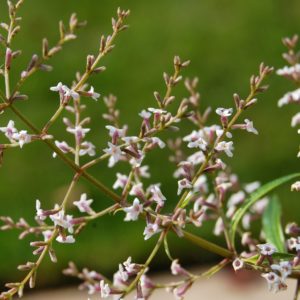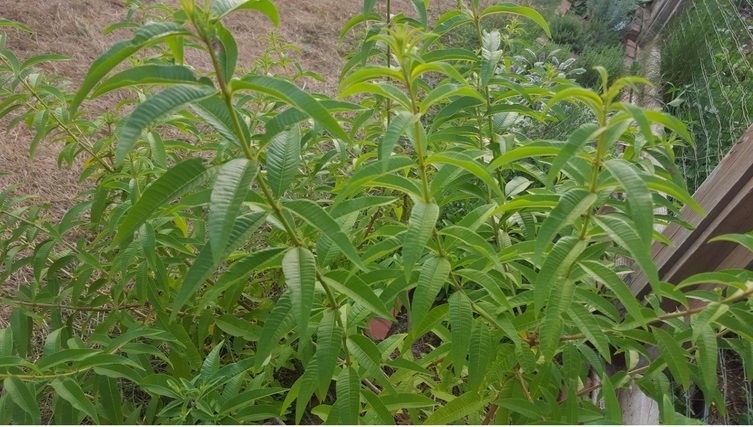
Lemon Verbena Flowers
Lemon verbena (Aloysia citrodora) is a fragrant tropical shrub native to Chile and Argentina. It was brought to Europe by Spanish explorers in the 17th century. Its lemon scented oil was used in cosmetics and perfumes until the introduction of lemongrass and its less expensive oil. The Victorians, who were fond of potpourri, loved lemon verbena because its leaves keep their scent for a long time after drying.
Nowadays, the leaves are used in cooking and herbal teas as well as potpourri. The plants can often be found near doorways and close to outdoor living spaces where its foliage releases its refreshing scent each time you brush by.
Lemon verbena is hardy through zone 9. In colder zones, it is often grown in containers and brought indoors during the winter. It grows to a height of 6 feet with a spread of 8 feet in most areas. In tropical gardens, where it never becomes dormant, it can grow to 15 feet. In colder regions, temperatures below 40⁰F cause the leaves to drop and the plant to enter dormancy. Most gardeners wait for the leaves to drop in the fall before bringing their plants indoors. This prevents insects from coming indoors on the leaves as well as the clean-up necessary after the plants drop their leaves from the stress of being transferred into an indoor environment.
Outdoors, lemon verbena likes afternoon shade in tropical areas but full sun in northern areas. Lack of sunlight in colder climates will result in spindly growth and less fragrant leaves. It also does poorly if grown in soil that is not well-drained. Unlike most herbs, lemon verbena should be fertilized regularly during active growth, every four weeks outdoors and every two weeks when grown indoors. It should not be fertilized at all during dormancy.
To successfully grow lemon verbena in a container, you should use a 12-inch pot to allow the roots enough room. After the cold weather sets in and the plant has shed its leaves and entered dormancy, it is best to bring it indoors and place it in a cool dark place. While dormant, you should neither water nor fertilize it. When spring arrives, you can bring your plant outdoors. Sunlight will magically bring your plant back to life and you can resume regular watering and fertilizing.
Lemon verbena has tiny white flowers which grow in sprays at the ends of the branches. They appear in late spring or early summer. The flowers only reliably set seed in the tropics. They each produce 2 seeds. The seeds are not usually viable so propagation is done vegetatively.
To propagate your shrub, you want to take basal cuttings which are cuttings that are made at the base of the shoots where they join the crown of the plant. These type of cuttings root very easily. For best results, you should take basal cuttings while the plant is actively growing in the summer. If you wait until fall when growth is slowing, the cuttings will take much longer to root.

